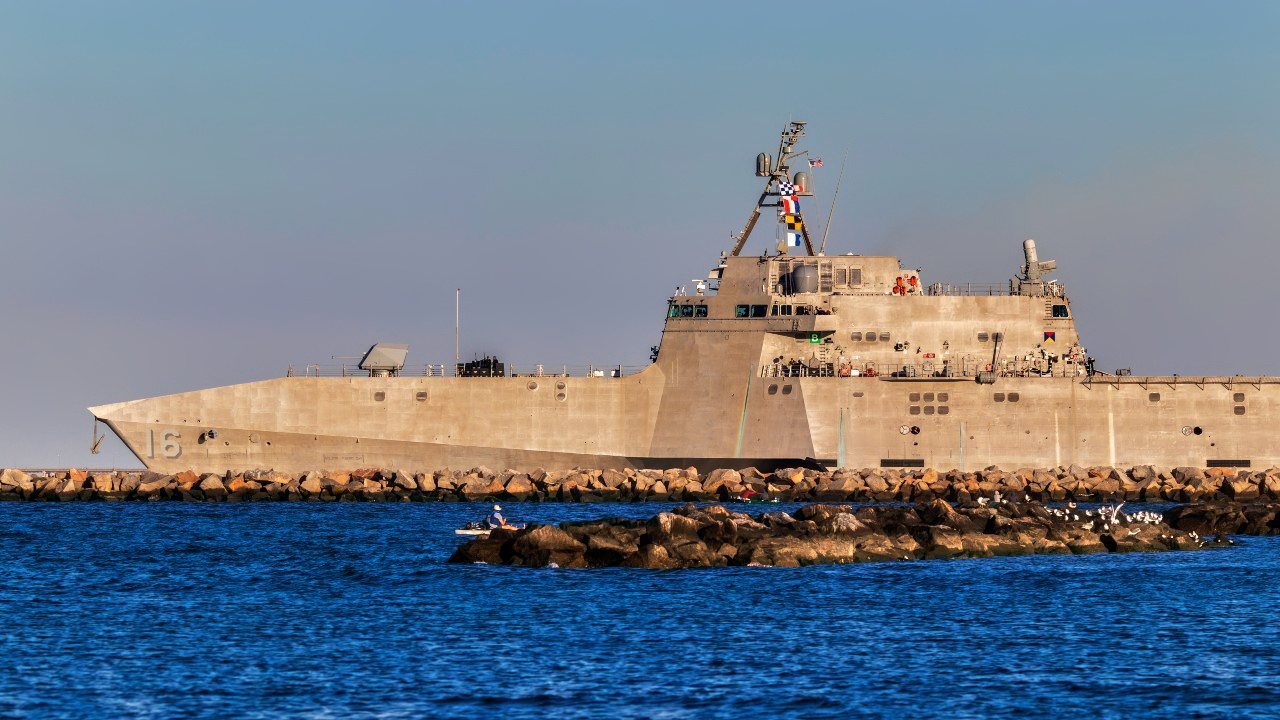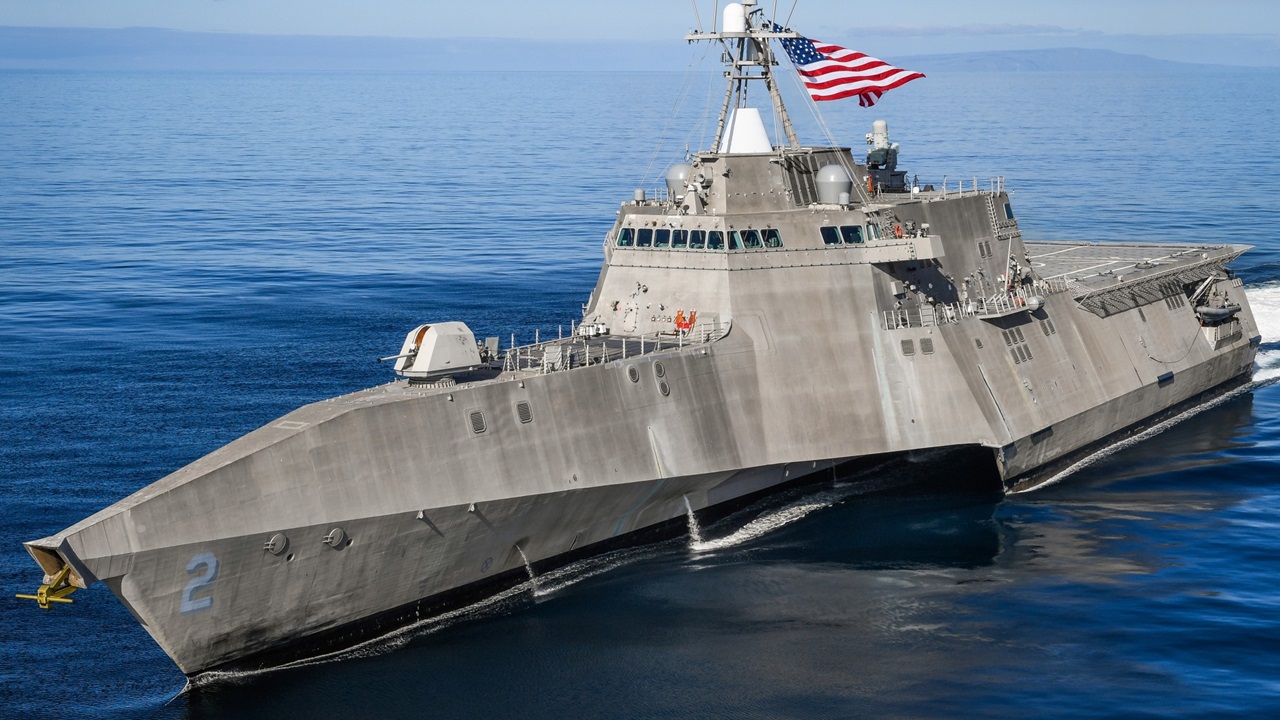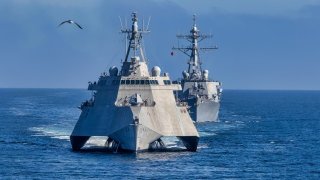Billions of Dollars Wasted: The Navy's Littoral Combat Ship Nightmare
The U.S. Navy's Littoral Combat Ship (LCS) program is widely regarded as a mistake in hindsight due to persistent maintenance issues, cost overruns, and an unclear mission profile. Designed as versatile, multi-mission vessels for near-shore operations, the LCS was intended to perform tasks ranging from anti-submarine warfare to minesweeping.
What You Need to Know: The U.S. Navy's Littoral Combat Ship (LCS) program is widely regarded as a mistake in hindsight due to persistent maintenance issues, cost overruns, and an unclear mission profile. Designed as versatile, multi-mission vessels for near-shore operations, the LCS was intended to perform tasks ranging from anti-submarine warfare to minesweeping.

-However, the ships have faced propulsion system failures, contractor-dependent maintenance, and difficulties in swapping mission configurations.
-Originally planned for 52 ships, only 31 were built or under construction, and several have been decommissioned prematurely—some after just five years of service. Criticized for being under-armed and unable to survive in hostile combat environments, the LCS is likely to be phased out aggressively and remembered as a costly failure.
The Littoral Combat Ship: How High Hopes Turned into Disappointment
Was the U.S. Navy’s Littoral Combat Ship program a mistake?
Hindsight suggests that yes, the program seems to have been a mistake; the once highly touted ship of the future is less than two decades old yet is already being decommissioned. The problem: persistent maintenance issues, an unclear objective, and cost overruns.
What Is/Was the Littoral Combat Ship or LCS?
The Littoral Combat Ship is a surface vessel built for near-shore operations and built to do a little bit of everything, kind of like a Swiss Army Knife, or an F-35 Joint Strike Fighter. On paper, the Littoral Combat Ship was designed to do everything from anti-submarine warfare to anti-surface warfare to reconnaissance, interception, minesweeping, and so on.
Everything.
The Littoral Combat Ship even housed helicopters, drones, and assault teams that could further augment the ship’s application.
The one thing that the Littoral Combat Ship was not designed for open combat.
Originally, the Navy was all in on the Littoral Combat Ship, with plans to buy fifty-two vessels. But the original plans were slashed, leaving just thirty-one Littoral Combat Ships either built or under construction.
How Has the Program Gone?
The Littoral Combat Ship program has not gone well. Costing billions and billions of dollars, the return on the investment has been limited. Underscoring the failure of the program, several Littoral Combat Ships have already been decommissioned. I write “already” because the Littoral Combat Ship was designed to have a shelf life of twenty-five years.
But the USS Freedom lasted just thirteen years. The USS Independence lasted just eleven. The USS Detroit served for just seven years before being decommissioned last September. The USS Sioux City five years. The USS Sioux City cost taxpayers $362 million. Five years for $362 million is a bad investment.

The program has just been a mess, especially concerning the propulsion system. “High speed required a complex propulsion system that, two decades on, breaks so often…the type struggles to complete a deployment,” Forbes reported.
Another problem: the ship’s maintenance is highly contractor-dependent, meaning the Navy itself is often incapable of performing the oft-required maintenance.
And while the Littoral Combat Ship was designed to be a jack-of-all-trades, capable of serving in a variety of different roles, swapping role configurations has proven so troublesome that the Navy just sticks to one configuration per vessel.
“Perhaps worst of all, to keep down the roughly $500-million-per-ship cost of the hulls, the Navy chose to arm them only with light weaponry, guns, and short-range self-defense missiles,” Forbes reported. The light weaponry configuration would likely be a problem in a direct conflict with China. Indeed, as one 2010 Pentagon report found: the Littoral Combat Ship would not be able to survive in a hostile combat environment, yet is too large, and too expensive, to perform a scouting role.
While the Navy is still in possession of several brand-new Littoral Combat Ships, the vessel will likely be phased out aggressively and will be remembered as a failure.
About the Author: Harrison Kass
Harrison Kass is a defense and national security writer with over 1,000 total pieces on issues involving global affairs. An attorney, pilot, guitarist, and minor pro hockey player, Harrison joined the US Air Force as a Pilot Trainee but was medically discharged. Harrison holds a BA from Lake Forest College, a JD from the University of Oregon, and an MA from New York University. Harrison listens to Dokken.
Image Credit: Creative Commons and/or Shutterstock.


